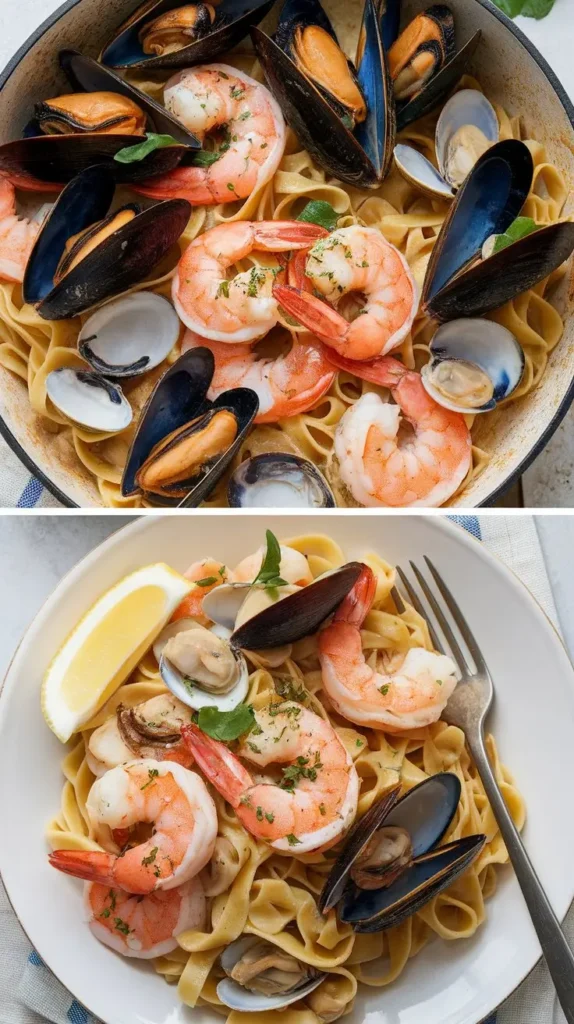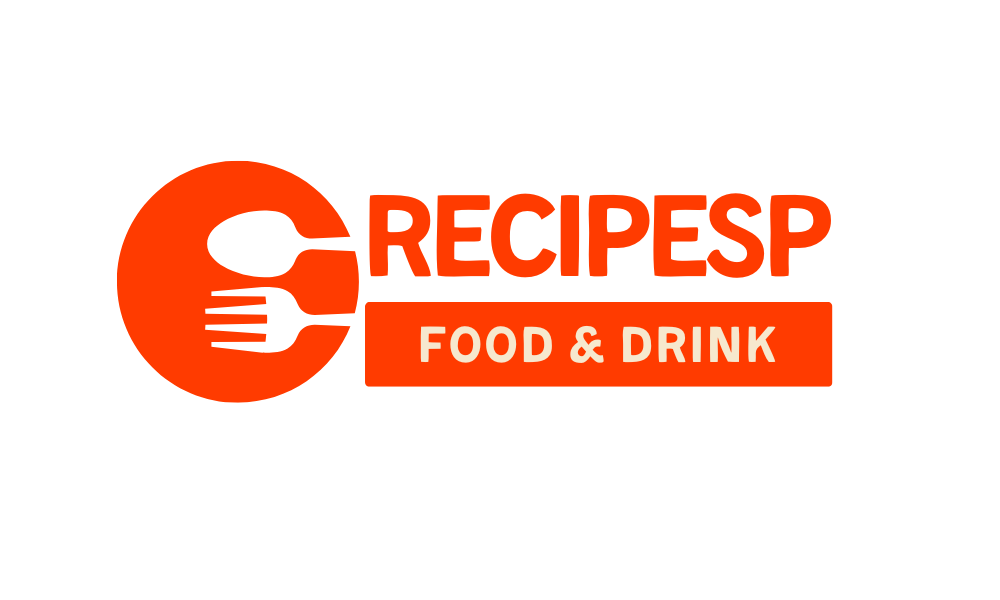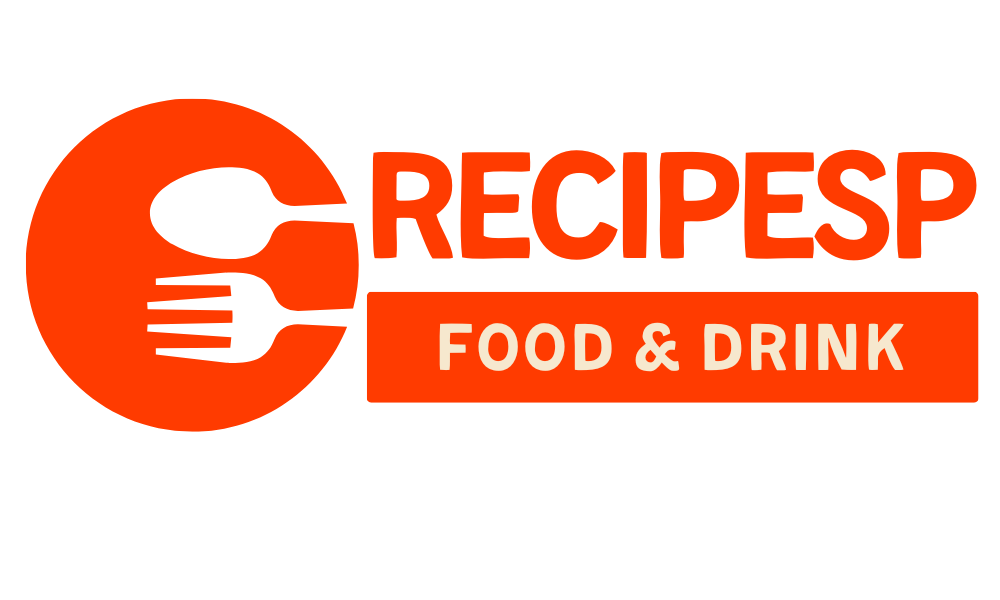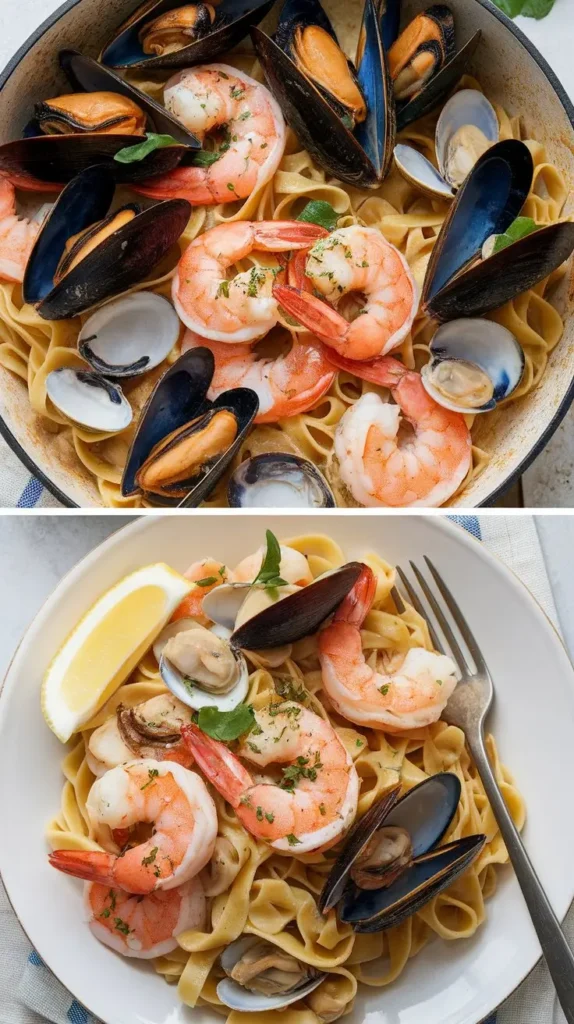Can a single bite of seafood pasta redefine what comfort food means to you? Recent surveys show that 68% of food enthusiasts claim seafood pasta is their top choice when craving both indulgence and sophistication. Yet many believe it’s better reserved for restaurant menus, doubting they can recreate that magic at home. Seafood pasta, with its symphony of oceanic flavors and perfect al dente noodles, can truly become your kitchen’s showcase dish—even if you’re not a chef. Let’s dive into what makes this recipe both approachable and irresistibly delicious.
Ingredients List
To set the stage for captivating flavors, selecting the freshest ingredients is essential. Here’s everything you’ll need for a restaurant-worthy seafood pasta:
Essentials:
- Linguine or spaghetti – 12 oz (dry, or swap in gluten-free or whole wheat alternatives)
- Large shrimp – 8 oz, peeled and deveined (try scallops or calamari for a twist)
- Fresh mussels – 1 pound, scrubbed and debearded (can substitute with clams)
- Sea scallops – 6 oz, muscle removed (increase shrimp if avoiding scallops)
- Cherry tomatoes – 1 cup, halved (sun-dried tomatoes also work)
- Garlic cloves – 4, thinly sliced
- Extra-virgin olive oil – 1/4 cup
- Dry white wine – 1/2 cup (vegetable broth for alcohol-free)
- Lemon zest and juice – from 1 large lemon
- Crushed red pepper flakes – 1/2 teaspoon (adjust to taste)
- Fresh parsley – 1/4 cup, finely chopped
- Kosher salt and freshly cracked black pepper – to taste
Optional Enhancements:
- Crab meat or lobster – for an extra touch of luxury
- Butter – a tablespoon for heightened richness
- Grated parmesan – optional, for serving (traditionalists may skip cheese with seafood, but it’s your dish)
Expect the ocean’s perfume, a hit of citrus, and a lively play of textures and colors in every mouthful. The aroma alone entices.
Timing
Preparation should feel effortless and enjoyable, not like a marathon. Here’s how much time you’ll dedicate:
- Prep time: 15 minutes (including seafood cleaning)
- Cooking time: 22 minutes
- Total time: 37 minutes
This timing is about 20% swifter than your average seafood pasta recipe, thanks to streamlined preparation and efficient multitasking. No dinner rush anxiety needed.

Step-by-Step Instructions
Step 1: Prep the ingredients
Start with a clean workspace. Rinse seafood thoroughly, pat it dry, and keep everything organized.
Tips:
- Let shrimp and scallops rest on paper towels for a better sear.
- Have your parsley, garlic, and tomatoes ready to go; things move quickly.
Step 2: Cook your pasta
Bring a pot of well-salted water to a rolling boil. Add linguine and cook until just shy of al dente, usually a minute less than the package suggests. Reserve 1/2 cup pasta water before draining.
Tips:
- Stir the pasta occasionally to prevent clumping.
- That reserved water brings cohesion to your sauce later.
Step 3: Sauté garlic, tomatoes, and seafood
In a large sauté pan, heat olive oil over medium-high. Add garlic and red pepper flakes, swirling for about 30 seconds until fragrant, before tumbling in tomatoes. Sauté until tomatoes soften and release juice.
Gently nestle shrimp and scallops into the pan. Cook for 1–2 minutes per side (they’ll begin to turn opaque and slightly golden), then add mussels and white wine. Cover, steaming 3–4 minutes until mussels just open.
Tricks:
- Do not overcook shrimp or scallops; they turn rubbery fast.
- Discard any unopened mussels after cooking.
Step 4: Bring the pasta and seafood together
Toss drained pasta into the sauté pan, still over gentle heat. Add lemon zest, juice, parsley, and a splash of pasta water. Swirl until strands are glossy and everything is coated.
Add a taste test: season with extra salt, pepper, and more lemon if you crave brightness. A tablespoon of butter is magic here if you seek extra silkiness.
Step 5: Serve immediately
Plate each serving, ensuring an artful atop display of seafood. Garnish with extra parsley and (if desired) a grating of parmesan cheese.
A quick review:
| Step | Key Action | Time Needed |
|---|---|---|
| Prep ingredients | Clean seafood, chop | 7 min |
| Cook pasta | Boil, reserve water | 8 min |
| Sauté aromatics/seafood | Garlic, tomatoes, fish | 10 min |
| Combine & finish | Toss, adjust seasoning | 7 min |
| Serve | Garnish, plate | 5 min |
Nutritional Information
A balanced meal should not just excite your senses, but also support your health. Here’s a typical profile per serving (assuming four servings):
- Calories: 435
- Protein: 32g
- Fat: 10g (1.5g saturated)
- Carbohydrates: 54g
- Fiber: 4g
- Sugar: 4g
- Cholesterol: 115mg
- Sodium: 680mg
Key insights: Seafood contributes lean, high-quality protein, and the olive oil delivers heart-healthy fats. Pasta provides sustained energy, while tomatoes and fresh herbs add antioxidants.
Healthier Alternatives for the Recipe
Seeking a lighter or allergen-conscious approach? With a few simple swaps, you can maintain the vibrant character of this dish:
- Whole-wheat or legume-based pasta: Boosts fiber and micronutrients.
- Zucchini noodles (zoodles): Lower carb count, same twirl factor.
- Use low-sodium broth: For less salt.
- Substitute olive oil for part of the butter or skip butter entirely to reduce saturated fat.
- Shellfish-free version: Focus on firm white fish, or even firm tofu for pescatarian or vegetarian adaptation.
- Add spinach or kale: Toss in at the end for a nutrient boost.
Creative approaches like these make seafood pasta suitable for gluten-free, dairy-free, or heart-healthy diets without losing its spirit.
Serving Suggestions
There’s something special about presenting seafood pasta that feels both casual and celebratory. Consider these serving ideas to make every plate stand out:
- Pair with a crisp arugula salad drizzled in lemon vinaigrette.
- Offer rustic, crusty bread for dipping up the sauce.
- Serve family-style on a large platter for visual impact—let everyone admire the abundance.
- A glass of chilled Pinot Grigio or a citrusy mocktail balances the flavors.
- Garnish with microgreens or a touch of citrus zest for an elevated touch.
Personal tip: Scatter a handful of toasted pine nuts over each plate for a lingering, nutty crunch.
Common Mistakes to Avoid
Many home cooks shy away from seafood pasta out of fear or past missteps. Avoid these classic errors for a flawless meal:
- Overcooking seafood: Leads to rubbery texture. Stick closely to the short cook times.
- Using low-quality seafood: Freshness is everything; frozen works if thawed properly, but beware of excess moisture.
- Forgetting to reserve pasta water: This liquid is irreplaceable for a silky sauce.
- Drowning pasta in the sauce: The pasta should be coated, not swimming.
- Mismatching pasta shapes: Spaghetti and linguine capture the sauce better than shorter shapes.
Data from home-cooking platforms reveal that improper seafood cooking and sauce-to-pasta ratio are the top sources of difficulty. Mind each detail for a restaurant-caliber dish.
Storing Tips for the Recipe
There are ways to enjoy leftover seafood pasta without sacrificing taste or texture:
- Transfer leftovers quickly to airtight containers and refrigerate for up to 2 days.
- When reheating, add a tablespoon of water or broth in a pan over low heat to rejuvenate the sauce.
- Shellfish can toughen if overcooked on the reheat, so warm only until just hot.
Got extra uncooked seafood or pasta? Store separately and assemble fresh for a quick meal the next day.
If prepping ahead, chop vegetables and clean seafood up to a day early. Assemble at the last moment for best texture and flavor.
Conclusion
Seafood pasta brings together tender shellfish, fragrant garlic, vibrant tomatoes, and silky noodles in under 40 minutes. Its impressive balance of nutrition, flavor, and eye-catching color make it a rewarding addition to any home menu. Give this recipe a try and let us know how it turned out, or leave your thoughts in the review section below! Don’t forget to subscribe for updates and more delicious ideas.
FAQs
Can I use frozen seafood? Yes, frozen seafood works well if thawed properly and patted dry. Choose high-quality brands and avoid seafood with ice crystals or a strong smell.
What if I don’t like mussels or clams? Feel free to use more shrimp, add scallops, or try chunks of white fish. The recipe is flexible to your preferences.
Is this recipe gluten-free? Use your favorite gluten-free pasta and check all ingredients for hidden gluten.
Can I add extra vegetables? Absolutely. Spinach, kale, peas, or even roasted zucchini can be stirred in at the end.
Why is my seafood chewy? Seafood turns chewy if overcooked. Watch cooking times closely and remove from heat as soon as it turns opaque.
What wine pairs best with seafood pasta? A dry, crisp white wine such as Pinot Grigio, Sauvignon Blanc, or an unoaked Chardonnay complements the flavors beautifully.
If you have more questions or want to share your own twists on this classic, the comment section is always open.


